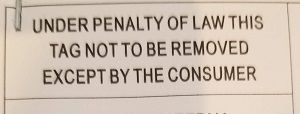
Photo credit: jb
In case you’re not aware of it, there is a strict rule that the IRS applies with regard to IRA rollovers: you are allowed to roll funds over from an IRA using the 60-day rule only once during each 12-month period. FYI: Trustee-to-trustee transfers are not considered rollovers for this rule.
Here’s an example of what could happen: Early in the year, you withdraw some money from your IRA to help you catch up on some bills. Then, you receive a bonus within the 60-day period after your withdrawal, so you deposit those funds back into the same (or any other) IRA.
Later in the year, you want to take another short-term distribution from your IRA, and once again circumstances present the opportunity to put the funds back into the first IRA… but now you’re stuck. You can’t roll the distribution back into the original IRA (or any IRA), since you’re still within the 12-month period, and the 12-months won’t be up until after your 60 days is past. And you can’t roll it into another IRA either, since the rule applies to all IRAs.
You’ll be liable for the tax on this distribution, which might be troublesome in itself. Plus, you’ll be derailing a portion of your retirement funding, taking this money out of the deferred-tax bucket. Also, unless you meet one of the exceptions (see #3 below) you may be subjected to an additional 10% penalty for the withdrawal.
Here’s what you can do
You have a few choices in a situation such as this:
- Rollover the IRA money into a qualified plan, such as a 401(k) or 403(b). Not all of these plans allow “roll-ins” but many allow roll-ins nowadays. The 12-month rule doesn’t apply to rollovers from an IRA to other types of plans. This will keep the money in a deferred-tax account, costing you no additional tax or penalties at this time.
- Convert the funds to a Roth IRA. Even though you’ll have to pay tax on the conversion, this can be a valid move as well. The 12-month rule also doesn’t apply to conversions. You’ll have to pay tax on the withdrawal anyway since it can’t be rolled back into a traditional IRA, so you might as well make lemonade from your lemony situation.
- Review the list of exceptions to the early withdrawal rules in 19 Ways to Withdraw IRA Funds Without Penalty – you might be able to at least avoid the early withdrawal penalty of 10% by applying one of these options.
That’s all I can come up with to help you deal with a situation where you’re affected by the one-rollover-per-year rule. See the article The One-Rollover-Per-Year Rule: Revised for more information about how this limitation rule works.


 Sterling Raskie, MSFS, CFP®, ChFC®
Sterling Raskie, MSFS, CFP®, ChFC® The latest in our Owner’s Manual series, A 401(k) Owner’s Manual, was published in January 2020 and is available on
The latest in our Owner’s Manual series, A 401(k) Owner’s Manual, was published in January 2020 and is available on  A Medicare Owner’s Manual, is updated with 2020 facts and figures. This manual is available on
A Medicare Owner’s Manual, is updated with 2020 facts and figures. This manual is available on  Social Security for the Suddenly Single can be found on Amazon at
Social Security for the Suddenly Single can be found on Amazon at  Sterling’s first book, Lose Weight Save Money, can be
Sterling’s first book, Lose Weight Save Money, can be  An IRA Owner’s Manual, 2nd Edition is available for purchase on Amazon. Click the link to choose the
An IRA Owner’s Manual, 2nd Edition is available for purchase on Amazon. Click the link to choose the  Jim’s book – A Social Security Owner’s Manual, is now available on Amazon. Click this link for the
Jim’s book – A Social Security Owner’s Manual, is now available on Amazon. Click this link for the  And if you’ve come here to learn about queuing waterfowl, I apologize for the confusion. You may want to discuss your question with Lester, my loyal watchduck and self-proclaimed “advisor’s advisor”.
And if you’ve come here to learn about queuing waterfowl, I apologize for the confusion. You may want to discuss your question with Lester, my loyal watchduck and self-proclaimed “advisor’s advisor”.